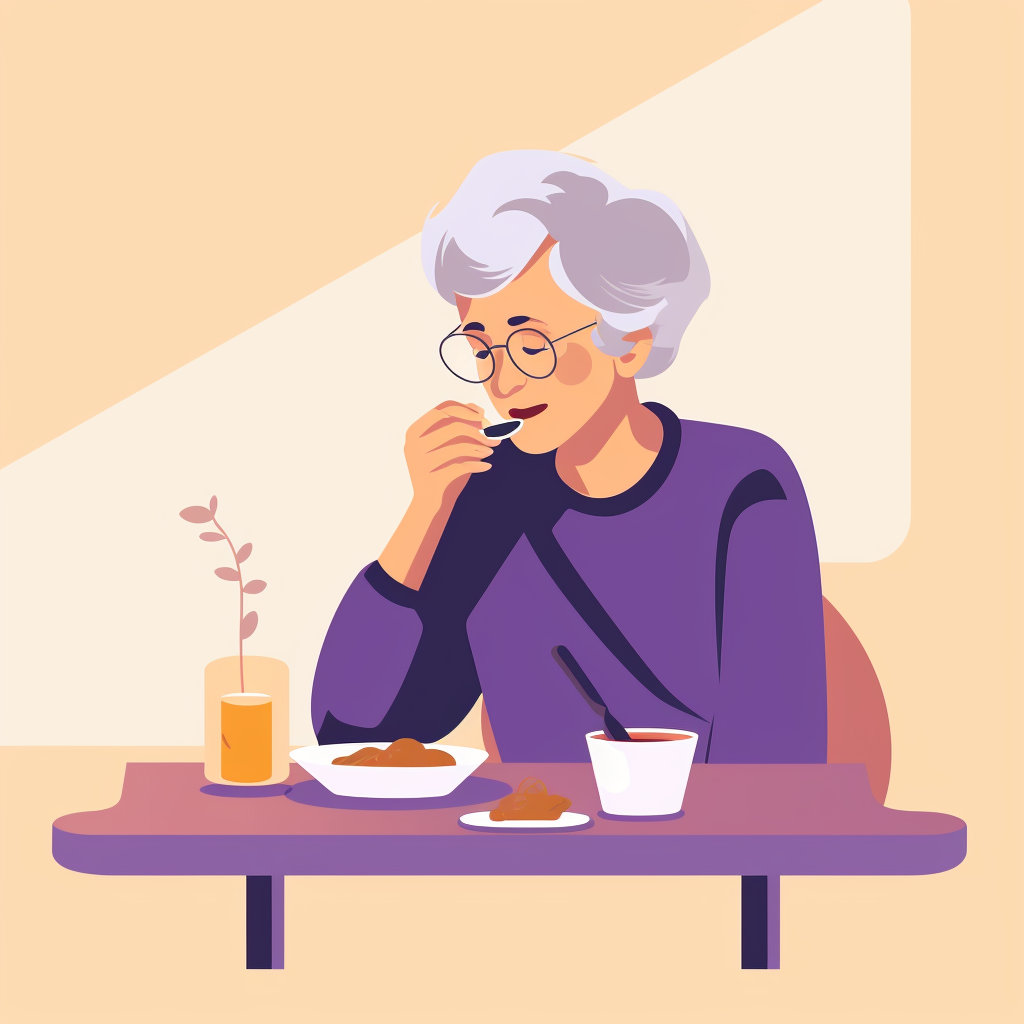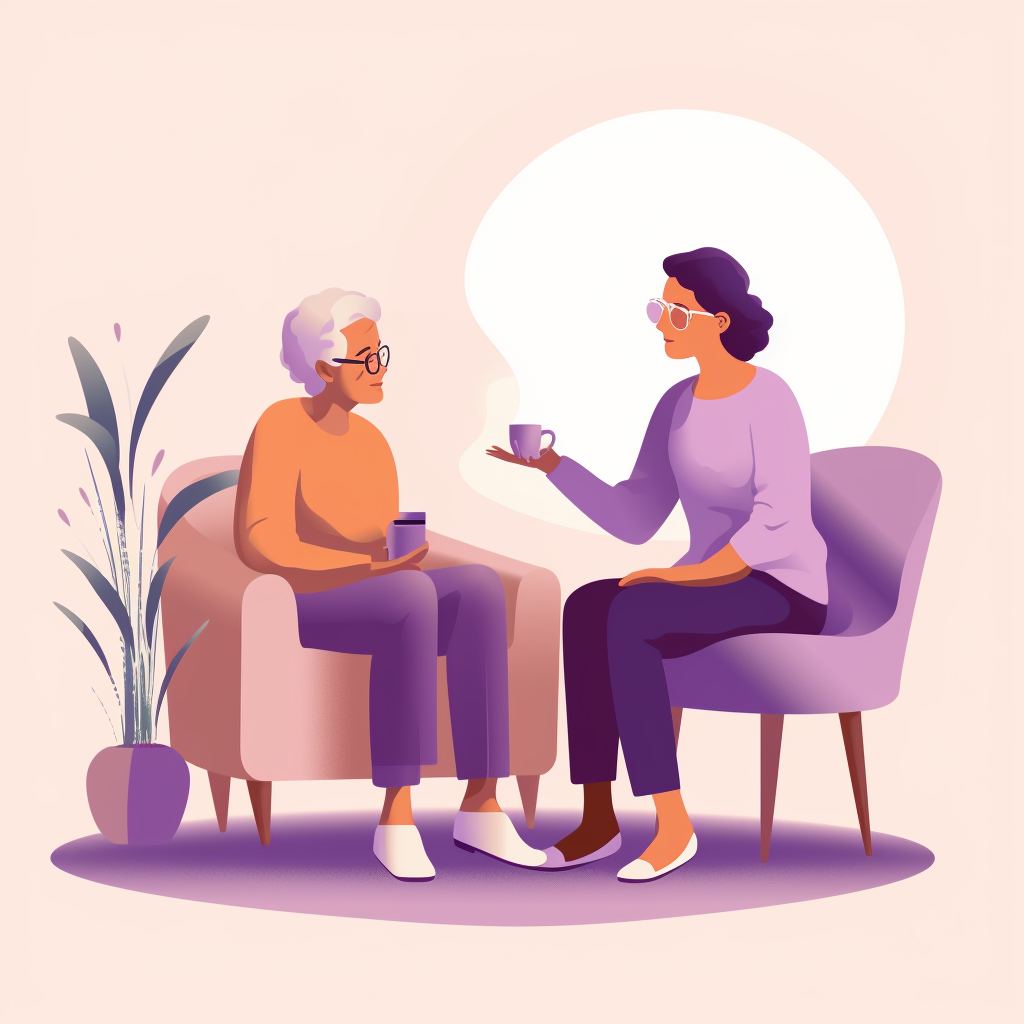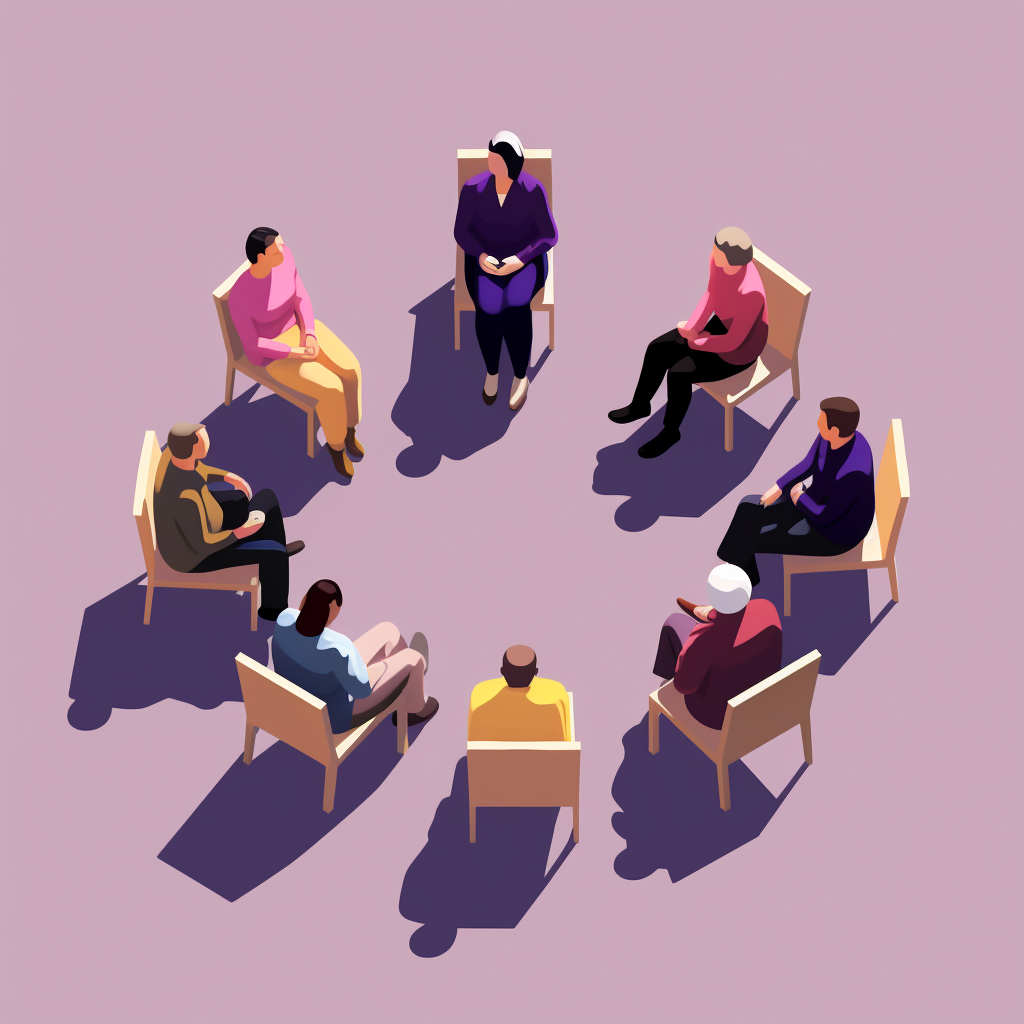Introduction
In the ever-evolving landscape of retirement and elder care planning, one aspect remains consistent: the necessity for a comprehensive approach. Whether you're strategizing for your own golden years or mapping out the details for a loved one, a well-rounded plan that encompasses various facets of life is key.
At the heart of this planning lies an acknowledgment of the unique and diverse needs of the elderly population. From maintaining physical well-being to ensuring a rich quality of life emotionally and socially, the aspects to consider are both critical and expansive.
In this guide, we aim to be your trusted companion in navigating these complexities. Leveraging our expertise in the field, we'll provide you with insightful and practical advice, helping you make informed decisions that align with your specific circumstances.

To guide you through this in-depth, comprehensive review of the care needs to consider for elder care planning, we offer this outline as a scaffolding that we'll follow:
Section 1: Physical Health Considerations (21 Total Needs, 65 Solutions Explored)
Mobility Needs
- Various assistive devices
- Adapting homes for better mobility
- Transportation solutions
Chronic Conditions
- Managing prevalent chronic conditions
- Medication management
- Specialist consultations and integrative approaches
Sensory Impairments
- Assistance for visual impairments
- Assistance for hearing impairments
- Sensory therapy
Nutrition and Hydration
- Diet plans and nutritional consultation
- Strategies for managing dietary restrictions
- Hydration aids

Sleep Patterns
- Sleep disorders in the elderly
- Bedroom setups for better sleep
- Sleep therapy
Exercise and Physical Activity
- Adapted physical activities
- Benefits of regular physical activity
- Integrating exercise into daily routine
Preventative Care
- Regular screenings and check-ups
- Vaccinations
- Health education
Section 2: Cognitive Health Considerations (18 Total Needs, 44 Solutions Explored)
Memory Care
- Dementia and Alzheimer's care
- Memory care facilities
- Strategies for memory enhancement
Routine & Structure
- Developing routines for different cognitive abilities
- Adaptable daily routines
- The role of technology in aiding routine
Safety Measures
- Enhancing home safety
- Technology for safety monitoring
- Emergency planning and response
Mental Stimulation
- Cognitive exercises
- Engaging in arts and crafts
- Lifelong learning and educational opportunities

Mental Health
- Coping with age-related anxiety and depression
- Therapy and counseling
- Support groups and communities
Legal and Financial Planning
Section 3: Emotional and Social Needs (24 Total Needs, 51 Solutions Explored)
Social Interaction
- Facilitating social interactions
- Utilizing technology for maintaining connections
- Community programs and social groups
Therapy & Counseling
- Individual therapy
- Group therapy
- Family therapy and counseling
Engaging Activities
- Finding purpose through hobbies
- Community engagement
- Travel and recreation opportunities

Support Systems
- Building strong support networks
- Caregiver support
- Peer support groups
Spiritual Well-being
- Exploring spirituality and aging
- Spiritual support groups
- Meditation and mindfulness
Creative and Expressive Outlets
- Opportunities for creative expression
- Benefits of engaging in creative activities
- Community arts programs
Conclusion
- Synthesis of the comprehensive approach to elder care
- Encouraging proactive and multifaceted elder care planning
Additional Resources
- Extensive list of books, websites, and communities
- Workshops and seminars
- Contacts for local and online support and resources
By the end of your reading, we hope to impart a sense of clarity and confidence, empowering you to take the next steps with a well-informed and compassionate approach.
Section 1: Physical Health Considerations
Mobility Needs
In the realm of elder care, attention to mobility needs stands as a cornerstone. As individuals age, there's a natural progression in the range and type of assistance required to maintain mobility and keep themselves safe from falls which could lead to a long, painful and expensive journey towards recovery. This is so critical because once someone has their first fall, it is typically the first of many until they wind up more permanently in the hospital or a managed care environment. Let's explore various avenues to ensure comfort and safety in this domain.

Various Assistive Devices
Navigating daily life with enhanced ease often begins with the right assistive devices. These tools are designed to offer support, enabling individuals to move around confidently. Here, we spotlight several types of devices, each tailored to address different levels of mobility challenges:
- Walking Aids: From canes to walkers, these aids provide stability and balance, helping to prevent falls and other accidents.
- Wheelchairs and Scooters: For those with significant mobility challenges, wheelchairs and scooters can be life-altering, offering a means to move around freely without exhaustion.
- Lift Chairs: These specialized chairs facilitate smoother transitions from sitting to standing positions, aiding individuals with limited strength or balance.
Waterlily's financial planning software can assist you in budgeting for these vital tools, ensuring a seamless integration into your long-term care plan.
Adapting Homes for Better Mobility
Making a home more navigable is often a pivotal step in enhancing the quality of life for older adults. Here are some practical modifications that can make a big difference:
- Ramps: Installing ramps can make a home wheelchair or scooter accessible, easing daily movements.
- Stairlifts: For multi-story homes, stairlifts can be a crucial addition, enabling safe and comfortable access to different levels of the house.
- Wider Doorways: Expanding doorways can accommodate mobility aids, making it easier to move from room to room without obstacles.
- Bathroom Modifications: Adapting bathrooms with grab bars and walk-in showers can minimize the risk of falls and facilitate ease of use.
Transportation Solutions
As mobility challenges increase, so does the need for reliable transportation solutions. Here, we present a few options to consider:
- Accessible Vehicles: Vehicles equipped with lifts and ramps can facilitate travel for those utilizing wheelchairs or scooters.
- Transportation Services: Many communities offer specialized transportation services for seniors, providing safe and convenient options for getting to appointments, grocery stores, and social engagements.
- Rideshare Apps: Several rideshare apps now offer features that cater to individuals with mobility challenges, making it easier to arrange for accessible transportation. Some platforms, such as GoGo, were built specifically with elder mobility in mind.

In the upcoming section, we will explore the chronic conditions often encountered during aging, and how to effectively manage them within a long-term care plan.
Chronic Conditions
Growing older often comes with the reality of facing chronic conditions that demand consistent management. As we delve into this segment, we emphasize the importance of comprehensive strategies that encompass not only medical treatments but also lifestyle modifications to mitigate the impacts of chronic ailments.
Managing Prevalent Chronic Conditions
In the course of aging, certain chronic conditions become more prevalent, affecting quality of life significantly. Some of the more common conditions include hypertension, diabetes, and arthritis, amongst others. Managing these conditions effectively involves a multi-faceted approach:
- Personalized Care Plans: Creating a plan that addresses individual health needs, inclusive of dietary guidelines, physical activity suggestions, and regular health monitoring.
- Lifestyle Adaptations: Encouraging habits that foster wellness, such as incorporating a balanced diet, engaging in regular physical activity, and avoiding excessive alcohol consumption and smoking.
- Community Support: Leveraging community resources and support groups can be a source of encouragement, shared experiences, and knowledge that aids in better management.

Medication Management
Managing medications effectively is a cornerstone in the treatment and management of chronic conditions. Here’s how you can approach it:
- Regular Reviews: Periodically review the medication list with healthcare providers to avoid potential interactions and side effects.
- Organized Systems: Utilize medication organizers or apps that assist in tracking dosage schedules, ensuring consistency and adherence.
- Pharmacist Consultations: Engaging with pharmacists to understand the nuances of each medication, including optimal timing and any dietary considerations.
Specialist Consultations and Integrative Approaches
As chronic conditions evolve, seeking specialized consultations becomes imperative. Moreover, considering integrative approaches can provide a holistic pathway to health management. Here are some strategies to consider:
- Expert Consultations: Collaborate with specialists who hold expertise in the specific chronic conditions faced, for nuanced guidance and management strategies.
- Complementary Therapies: Explore complementary therapies, such as physiotherapy or acupuncture, that can work in tandem with conventional treatments to enhance well-being.
- Mental Health Support: Recognize the intertwined nature of physical and mental health, and seek supportive therapies and counseling as needed to foster holistic wellness. More on this in our sections on mental health below.
Sensory Impairments
As we traverse the terrain of aging, it is not uncommon to encounter sensory impairments that can alter one's interaction with the world. Navigating this shift necessitates a well-rounded approach that brings together technology, therapy, and community support. In this section, we shed light on strategies to assist individuals with sensory impairments, empowering them to lead fulfilling lives.
Assistance for Visual Impairments
Visual impairments can range from mild vision loss to complete blindness from conditions such as cataracts or age related macular degeneration (ARMD). However, it doesn't mean that one's quality of life has to diminish. Here are some supportive measures that can be taken:
- Adaptive Technologies: Utilize adaptive technologies such as screen readers and magnifiers that make daily tasks easier and maintain independence.
- Environmental Adjustments: Make necessary adjustments in the living environment like increased lighting and high contrast settings to facilitate better visibility.
- Community Engagement: Engage with community programs that provide training on mobility and daily living skills, fostering a sense of autonomy and confidence.
- Early Detection: Being consistent with visual checkups can detect various eye diseases such as the forming of cataracts or ARMD early on, prompting timely intervention.

Assistance for Hearing Impairments
Hearing impairments, too, come in various degrees, affecting one's ability to communicate and socialize. Here, we explore ways to bridge the communication gap:
- Hearing Aids and Devices: Explore the range of hearing aids and assistive listening devices that amplify sounds, making communication smoother. Newer models are becoming more comfortable, stylish, and effective in picking up the sounds you want to amplify, and reducing distracting background noise.
- Sign Language and Lip Reading: While it may be a more extremely option, with very severe hearing loss it may be helpful to learn sign language or lip reading to enhance communication capabilities, creating a more inclusive environment. Learning new languages have been shown to reduce susceptibility to dementia.
Sensory Therapy
Sensory therapy is an innovative field that provides a holistic approach to managing sensory impairments. Here’s how it can be a valuable component of the support plan:
- Occupational Therapy: Occupational therapists can devise individualized plans that help in adapting to sensory changes, fostering better integration with the environment.
- Sensory Integration Therapy: This form of therapy assists in developing strategies to process sensory information more effectively, enhancing the overall quality of life.
- Recreational Therapy: Engaging in recreational therapies such as art or music therapy can be a rejuvenating experience, offering an avenue to express oneself and connect with others.
Nutrition and Hydration
Navigating the later stages of life involves rethinking one’s nutritional needs to foster overall wellbeing. This part of our discussion emphasizes the pivotal role of balanced nutrition and consistent hydration, offering strategies and solutions that can be tailored to individual preferences and health conditions.
Diet Plans and Nutritional Consultation
As we age, our dietary needs evolve, necessitating a careful reconsideration of nutritional intake. Here’s how one can approach this transformation:
- Personalized Consultation: Collaborate with healthcare professionals to develop diet plans that align with individual health needs and goals.
- Balanced Nutrient Intake: Prioritize a diet rich in essential nutrients, including fiber, vitamins, and minerals, to support physical health and vitality.
- Community Support: Connect with community groups or online forums where insights on managing dietary changes can be shared and discussed.
- Avoid Viral Fads Unsupported by Scientific Data: In modern social media content creators are incentivized to create shocking discoveries, typically about negative new findings about a common ingredient, in order to drive views, sharing, and ad revenue. Viral fabrications can quickly have many influencers sharing the information since there is now more confidence that similar content will perform well, and this spread of everyone talking about it can make the claims seem genuine. You can easily investigate any of these claims by looking for evidence supporting or contradicting the statement in the scientific literature using tools such as Google Scholar, or by searching for the claim in fact checking platforms like Snopes. If you're feeling brave, you can share your findings in the comments section to help others trying to navigate similar paths.

Strategies for Managing Dietary Restrictions
Managing dietary restrictions need not be a daunting task. Here are some strategies to navigate this process effectively:
- Nutrition Labels: Develop the habit of reading nutrition labels to make informed choices that align with dietary restrictions.
- Alternative Ingredients: Explore the use of alternative ingredients that cater to specific dietary restrictions without compromising on taste and nutrition. Generative AI chatbots such as ChatGPT can be helpful for modifying recipes in this way, just try sharing the recipe and explain your restrictions.
- Meal Planning: Adopt meal planning techniques that allow for the inclusion of diverse, nutritionally rich foods while adhering to dietary limitations.
Hydration Aids
Maintaining hydration is a critical aspect of senior care. Here, we explore aids that can assist in this regard:
- Hydration Reminders: Set up reminders to encourage regular fluid intake throughout the day, ensuring adequate hydration.
- Hydration Accessories: Make use of hydration accessories such as easy-to-use water bottles and cups that cater to varying levels of mobility.
- Fruit-Infused Waters: Experiment with fruit-infused waters to enhance flavor and encourage a better fluid intake, making hydration an enjoyable part of the daily routine.
By focusing on balanced nutrition and adequate hydration, we can lay the foundation for a thriving, energized life in the later years.
Sleep Patterns
As we age, a restful night's sleep becomes even more vital for maintaining overall health and wellbeing, and it also typically becomes more difficult to achieve. In this section, we turn our attention to common sleep patterns observed in older individuals, offering pragmatic solutions to encourage restful and revitalizing sleep.
Sleep Disorders in the Elderly
It is not uncommon for individuals to experience changes in sleep patterns as they age, in fact most people sleep for fewer hours, struggle to stay asleep, and reach deep levels of sleep for shorter periods of time throughout their sleep as they age. Recognizing and addressing these concerns can vastly improve quality of life.
Why We Sleep, written by Matthew Walker, who was one of my favorite professors at UC Berkeley when I took his Psychology of Sleep course, is an incredible book covering these topics in far more detail which I strongly recommend to anyone, whether you are considering sleep for an older or younger individual.
Here, we explore prevalent sleep disorders and suggest ways to manage them:
- Insomnia: A common disorder characterized by difficulty in falling or staying asleep. Managing it effectively may involve a combination of lifestyle changes and consulting with healthcare providers to explore potential treatments.
- Sleep Apnea: A serious condition where breathing repeatedly stops and starts during sleep. It requires medical attention, and treatments might include lifestyle modifications or the use of assistive devices.
- Restless Leg Syndrome: A discomfort in the legs that can interfere with falling asleep. Simple strategies like moderate exercise and avoiding caffeine can sometimes offer relief.
Bedroom Setups for Better Sleep
Creating an environment conducive to sleep can be a step in the right direction. Here are some suggestions to enhance bedroom setups:
- Comfortable Bedding: Invest in comfortable bedding that supports the spine and encourages a good sleeping posture.
- Lighting and Sound: Create a serene atmosphere with dim lighting and possibly white noise machines to drown out ambient noises.
- Temperature Control: Maintain a cool room temperature, as it is generally conducive to better sleep. Products such as the Eight Sleep mattress can help cool (or heat) each side of the bed separately if your partner prefers a different temperature.
Sleep Therapy
Sometimes, professional intervention can be a beacon of hope for those struggling with persistent sleep issues. Sleep therapy options include:
- Cognitive Behavioral Therapy for Insomnia (CBT-I): This type of therapy helps individuals develop habits that promote a more restful sleep.
- Sleep Hygiene Education: Learn about good sleep hygiene practices, which can be instrumental in fostering better sleep patterns.
- Relaxation Techniques: These techniques, including guided imagery or deep breathing exercises, can aid in calming the mind before bedtime.
Remember, a good night's sleep is not a luxury but an essential component of holistic well-being, especially in later life. These strategies are important to consider at any age.

Exercise and Physical Activity
Physical activity is one of the most important things that one can do to prepare for a long and healthy life. They promote flexibility, balance, healthy weight, vitality, mental and cognitive health, and so much more. This reduces fall and dementia risk and keeps individuals independent for longer, dramatically impacting their quality and length of life.
Adapted Physical Activities
No matter one's age or physical condition, there's always a suitable way to remain active. Adapted physical activities ensure that everyone can enjoy the benefits of exercise, even those with mobility challenges or sensory impairments. Here are some adapted physical activities to consider:
- Water Aerobics: A gentle yet effective option that reduces the strain on joints while providing resistance for a full-body workout.
- Chair Yoga: Offers the benefits of yoga, including flexibility and relaxation, without having to get down on a mat.
- Walking Groups: Joining a community walking group can be a wonderful way to combine social interaction with moderate exercise.
Benefits of Regular Physical Activity
The perks of maintaining a regular exercise regimen are manifold, extending well beyond physical health. Here, we highlight a few notable benefits:
- Improved Mobility: Regular activity can enhance mobility and reduce the risk of falls and injuries.
- Mental Health Boost: Engaging in physical activity can also uplift one's mood and help manage symptoms of anxiety and depression.
- Better Sleep: As mentioned in our earlier section, exercise can facilitate better sleep, helping individuals adhere to a healthy sleep pattern.
Integrating Exercise into Daily Routine
Adopting a routine doesn't necessarily mean hitting the gym daily. Here are some simple strategies to integrate physical activity into your daily life seamlessly:
- Short and Regular Breaks: Take short breaks throughout the day to stretch or walk around, which can be beneficial especially for those with sedentary lifestyles.
- Incorporate Movement: Find opportunities to move, whether it's choosing stairs over the elevator or walking while talking on the phone.
- Seek Guidance: If unsure where to start, consider consulting with a fitness professional who specializes in elder care to craft a personalized exercise plan.
Approaching exercise with a positive and adaptable mindset can truly transform one's experience of aging, paving the way for a life marked by vitality and joy.
Preventative Care
As we focus on carving a secure path into the golden years, the importance of preventative care cannot be stressed enough. Proactive steps not only aid in safeguarding physical health but also serve as a pillar for mental and emotional wellbeing. In this segment, we will guide you through the essential aspects of preventative care: regular screenings, vaccinations, and health education, aimed at fostering a fulfilling and healthy life.
Regular Screenings and Check-Ups
Staying ahead in the health game involves regular check-ups and screenings. These practices are instrumental in detecting potential issues before they escalate, allowing for timely interventions. Here, we underline the importance of these check-ups and how they can be integrated into your healthcare routine:
- Annual Physical Examinations: These provide a general health overview, helping to monitor vital signs and possibly uncovering underlying issues.
- Cancer Screenings: Regular screenings for prevalent cancers, such as breast, prostate, and colorectal, can facilitate early detection and treatment.
- Eye and Hearing Tests: Regular check-ups can help manage the progression of visual and auditory impairments, ensuring a better quality of life.

Vaccinations
Vaccinations are not just for children; they are a crucial part of healthcare at every age. Here's how to approach vaccinations in the later stages of life:
- Seasonal Flu Shot: Protecting yourself from seasonal illnesses is paramount, especially as one's immune system might not be as robust.
- Pneumonia Vaccine: A recommended vaccine for those above 65, it can prevent severe respiratory illnesses.
- Shingles Vaccine: To avoid the painful condition often affecting older adults, consider taking this vaccine as per healthcare provider's advice.
Health Education
Knowledge is empowering, and when it comes to health, it forms the foundation of preventative care. Here's how to stay educated and informed:
- Health Workshops and Seminars: Attend local or online workshops to stay updated on the latest in healthcare practices and advancements.
- Utilizing Trusted Resources: Make use of reliable sources for health-related information, such as government health websites or reputed health organizations.
- Consulting with Healthcare Providers: Regular consultations with healthcare providers can offer personalized advice and guidance on managing your health effectively.
Through preventative care, one navigates the path of aging with foresight and prudence, laying the groundwork for a life marked by vigor and peace of mind. In our upcoming sections, we will delve into mental and emotional health considerations, a pivotal aspect of aging gracefully.
Section 2: Cognitive Health Considerations
In the pursuit of a comprehensive long-term care plan, it's imperative to give due consideration to cognitive health. Cognitive health, intricately connected with memory care, plays a pivotal role in determining the quality of life in the later stages. It often encompasses the management and support for conditions such as dementia and Alzheimer's. Let's delve deeper into understanding the spectrum of memory care and how it can be efficiently managed.
Dementia and Alzheimer's Care
In our aging society, dementia and Alzheimer's have surfaced as prevalent concerns. Recognizing and understanding the needs of individuals living with these conditions is fundamental. Here, we aim to equip you with knowledge and strategies that can be instrumental in ensuring that you or your loved ones receive the appropriate care.
- Understanding the Conditions: Dementia is a general term for a decline in cognitive ability severe enough to interfere with daily life. Alzheimer's is the most common type of dementia. Understanding the nuances of these conditions can be a stepping stone in planning proficient care.
- Personalized Care Plans: Creating a care plan that is tailored to the individual's needs and preferences can foster a better quality of life. Collaborating with healthcare providers to design a plan that encompasses medical, physical, and emotional aspects can be beneficial.
- Support Networks: Building a network of family, friends, and professionals who can offer support, guidance, and assistance can help in managing the intricacies of these conditions more effectively.
Memory Care Facilities
Transitioning to a memory care facility can sometimes be a judicious decision, especially when specialized care becomes a necessity. These facilities are designed to provide an environment conducive to the wellbeing of individuals living with memory impairments. Here, we explore what these facilities offer:
- Specialized Care: Memory care facilities are equipped to offer specialized care, catering to the unique needs of individuals with memory impairments. They have trained staff who can handle the complexities of dementia and Alzheimer's care proficiently.
- Safety and Security: These facilities are structured to ensure the safety and security of its residents. From secured entrances to prevent wandering to round-the-clock surveillance, every detail is designed with the residents' wellbeing in mind.
- Therapeutic Activities: Engaging residents in therapeutic activities that stimulate the mind and foster social connections is a staple in memory care facilities. These activities are crafted to enhance memory and cognitive function, offering a balanced approach to care.

Memory care facilities are significantly more expensive than other comperable facilities, but you can learn about how to pay for them in our comprehensive article by Adam Vega CFP® How to Pay for Long Term Memory Care.
Strategies for Memory Enhancement
Harnessing strategies to enhance memory can be a proactive approach in cognitive health management. These strategies can be integrated into daily routines, encouraging a brain-healthy lifestyle. Here's a glance at some of the strategies that can be employed:
- Cognitive Exercises: Engaging in cognitive exercises can help in keeping the mind sharp. Activities such as puzzles, reading, and games that encourage critical thinking can be beneficial.
- Balanced Nutrition: A diet rich in nutrients, focusing on brain-healthy foods, can potentially play a role in memory enhancement. Incorporating foods rich in antioxidants and omega-3 fatty acids can be a wise choice.
- Physical Activity: Regular physical activity not only benefits the body but also has a positive impact on the brain. Activities such as walking, yoga, and swimming can encourage better cognitive function.
Through focused attention on cognitive health, we can foster a better understanding and approach to memory care. In the forthcoming segments, we will delve deeper into various facets of cognitive health and the strategies to manage them effectively.
Routine & Structure
In the journey of nurturing cognitive health, the significance of maintaining a structured routine cannot be understated. Well-devised routines can not only bring a semblance of order to the day but can also be instrumental in enhancing cognitive abilities. In this segment, we explore various facets of developing adaptable routines that can cater to different cognitive abilities and the role technology can play in facilitating these routines.
Developing Routines for Different Cognitive Abilities
Individuals at different stages of cognitive health may require distinct routines that align with their abilities and needs. Here are some approaches to consider:
- Personalized Activity Plans: Developing a series of activities that are not only engaging but also cater to the individual's cognitive abilities can be empowering. These could range from memory-enhancing games to guided art therapy sessions.
- Consistent Schedule: Maintaining a consistent daily schedule can bring a sense of stability and predictability, which can be comforting for individuals with cognitive impairments.
- Professional Guidance: Seeking guidance from professionals who specialize in cognitive health can assist in devising routines that are both beneficial and adaptable to the individual's evolving needs.
Adaptable Daily Routines
Creating routines that can adapt to the changing needs and abilities of individuals is a forward-thinking approach. Here, we shed light on strategies that can help in crafting such adaptable routines:
- Flexible Timelines: While consistency is key, allowing for flexibility in the daily timeline can make space for individual preferences and spontaneous activities.
- Multi-Sensory Activities: Incorporating activities that engage various senses can be a refreshing change and can cater to different cognitive abilities.
- Inclusion of Rest Periods: Introducing regular rest periods within the routine can ensure that individuals do not feel overwhelmed, thus promoting a more pleasant and manageable day.
The Role of Technology in Aiding Routine
Technology has unfurled a plethora of opportunities in assisting individuals with cognitive impairments. Here, we analyze the role it plays in aiding daily routines:
- Assistive Devices: Devices such as smartphones and tablets can be equipped with apps that assist in memory enhancement and daily organization. From reminder apps to virtual reality experiences, technology can play a pivotal role.
- Telehealth Consultations: The advent of telehealth has made it easier to consult with specialists and receive guidance on managing cognitive health without leaving the comfort of one’s home.
- Smart Home Integrations: Integrating smart home devices can facilitate a smoother daily routine. Features such as voice-controlled lighting or automated medication reminders can add a layer of ease and efficiency to the daily routine. They can also serve as a backup in the event of a fall, allowing an injured person to call someone for help by speaking to a nearby speaker (if setup correctly with a dialing service). My own grandmother has especially appreciated the Google Home speakers I've set up around her home, as well as the Nest Hub display which monitors her sleeping and gives her feedback on her sleep quality in the morning.

In closing, establishing routines that are adaptable and inclusive can act as a cornerstone in fostering cognitive health. As we proceed further in this section, we will continue to unravel strategies and considerations that can be instrumental in shaping a comprehensive approach to cognitive health care.
Safety Measures
As we navigate the multifaceted journey of cognitive health considerations, it becomes increasingly imperative to lay a strong emphasis on safety measures. Crafting a safe environment not only fosters a sense of security but also significantly enhances the quality of life for individuals with cognitive impairments. In this segment, we shall delve into various home safety modifications and essential emergency protocols that can be adopted to ensure a secure living space.
Home Safety Modifications
Modifying the home environment can act as a proactive step in safeguarding individuals from potential accidents and fostering a safe haven. Here are a few modifications that can be instrumental:
- Fall-Prevention Measures: Incorporate non-slip flooring and ensure that walkways are clear of obstacles to prevent falls. Adequate lighting is also essential to navigate safely.
- Safety Railings: Installing safety railings in crucial areas such as bathrooms and staircases can provide additional support and prevent accidents.
- Secure Lock Systems: Implementing secure lock systems can prevent individuals with cognitive impairments from wandering off and finding themselves in unsafe situations.
- Fire Safety: Ensure that smoke alarms are functional and that the home is equipped with fire extinguishers to manage any unforeseen emergencies.
- Accessible Emergency Numbers: Keeping a list of emergency numbers in an accessible location can be a lifesaver in urgent situations.
- Smart Home Speakers: As mentioned in the last section, smart home speakers placed around the house can provide an opportunity to call for support or emergency services if someone falls while alone in the home. Even if wearing life alert or a smart watch, I've heard horror stories of family members falling when they just happen to not be wearing the device, and being stuck on the floor for hours before someone fortunately checked on them. Smart home speakers can be a fantastic backup option to have.
Emergency Protocols
Establishing robust emergency protocols is vital in ensuring swift and efficient responses during crises. Here are some protocols that can be put into place:
- Emergency Contact List: Maintain a list of contacts who can be reached immediately in case of an emergency. This could include family members, close friends, or healthcare providers.
- Evacuation Plans: Develop a clear and concise evacuation plan that outlines the steps to be taken in case of an emergency, such as a fire or a natural disaster.
- Medical Information Kit: Keep a kit containing all essential medical information, including medication details, medical history, and doctor contacts, readily accessible. This can be instrumental in providing accurate information to emergency responders.
- Regular Drills: Conducting regular drills can help in familiarizing individuals with the steps they need to take during an emergency, making the process less daunting.
- Technology Integration: Utilizing technology to set up alert systems can be beneficial in ensuring that help is summoned promptly in case of an emergency.
In summation, placing a strong emphasis on safety measures is not just a precautionary step but a fundamental aspect of providing comprehensive care to individuals with cognitive impairments. As we venture further into the intricacies of cognitive health considerations, these safety protocols will form a solid foundation upon which a safe and nurturing environment can be built.
Mental Stimulation
Navigating through the realms of cognitive health considerations, we find ourselves amidst a crucial aspect that profoundly impacts an individual's quality of life: mental stimulation. Engaging the brain in activities that challenge and nurture it not only promises a fruitful engagement but also bears the potential to delay the onset of cognitive decline. In this segment, we shall explore the vibrant world of brain-training games and more importantly the indispensable role of lifelong learning in promoting mental health.

Brain-Training Games and Activities
In the evolving landscape of cognitive health management, brain-training games have emerged as a potent tool in fostering mental agility. These activities are meticulously designed to cater to various cognitive aspects, offering a stimulating and engaging way to fortify the mind. Here are some avenues that can be explored:
- Puzzles and Crosswords: Engaging in puzzles and crosswords can be an excellent way to enhance problem-solving skills and boost memory retention.
- Memory Card Games: Games like memory card matching can be instrumental in improving visual recognition and short-term memory.
- Online Brain Training Platforms: Various platforms offer a suite of games that focus on different cognitive skills, presenting an opportunity to engage in a comprehensive brain workout.
- Art and Craft Activities: Participating in art and craft activities can stimulate creativity while enhancing fine motor skills and concentration.
Importance of Lifelong Learning
As we tread the path of life, the pursuit of knowledge remains ceaseless. Lifelong learning stands as a testament to the undying curiosity and the quest for personal growth that characterizes human existence. Let us delve into why it holds a paramount place in cognitive health considerations:
- New Skill Acquisition: Learning a new skill, be it a musical instrument or a language, can be an exhilarating experience, fostering neural plasticity and enhancing cognitive reserves.
- Community Engagement: Lifelong learning often opens avenues for community engagement, offering a platform to forge new connections and enrich social life.
- Sense of Accomplishment: The joy derived from mastering a new concept or skill brings a profound sense of accomplishment, fostering positive mental health.
- Promoting Curiosity: Encouraging a curious mindset and an eagerness to explore new realms of knowledge can be a fulfilling journey, paving the way for a vibrant and enriched life.
To sum up, mental stimulation stands as a beacon in the vast ocean of cognitive health considerations, guiding individuals towards a path filled with engagement, enrichment, and personal growth. By integrating brain-training games and fostering a spirit of lifelong learning, we can usher in an era where cognitive health receives the attention and nurturing it truly deserves.
Mental Health
As we venture further into the discussion on cognitive health considerations, it is incumbent upon us to shed light on the integral aspect of mental health. The golden years often bring a shift in mental dynamics, an area that requires compassion, understanding, and proactive engagement. In this segment, we shall unravel the intricate facets of mental health during aging, coupled with pragmatic strategies to support and enhance mental well-being.
Understanding the Impact of Aging on Mental Health
The golden years bring with them a rich tapestry of experiences, but it also ushers in changes that have a profound impact on an individual’s mental health. Understanding the intricacies of this transition can pave the way for a more supportive environment. Here’s a closer look at some key considerations:
- Depression and Anxiety: Aging can sometimes be accompanied by conditions like depression and anxiety. Recognizing the signs and offering timely intervention can make a significant difference.
- Loneliness and Isolation: Older adults may face a heightened sense of loneliness and isolation, which can have detrimental effects on their mental health. Building networks of social support can be a mitigative strategy.
- Cognitive Decline: Gradual cognitive decline is a natural aspect of aging. Fostering environments that stimulate mental activity can be a beneficial approach in slowing this process.

Strategies for Supporting Mental Well-being
Fostering mental well-being in the elderly requires a multi-pronged approach that encompasses emotional, psychological, and social facets. Here we delineate some strategies that can be instrumental in promoting mental health:
- Therapeutic Interventions: Utilizing therapeutic interventions such as counseling or psychotherapy can be effective in managing mental health issues that may arise during aging.
- Physical Activity: Encouraging regular physical activity can not only enhance physical health but has been shown to boost mental well-being as well, by alleviating symptoms of depression and anxiety.
- Mindfulness and Meditation: Incorporating mindfulness and meditation practices can be a calming influence, helping to enhance mental clarity and emotional stability.
- Social Engagement: Promoting social engagement through community activities or family gatherings can be a vital aspect in nourishing the mental health of older adults.
In summation, nurturing the mental health of older adults is a holistic endeavor, requiring empathy, understanding, and concerted efforts to foster a nurturing environment, which we will expand upon in our third and final section.
Section 3: Emotional and Social Needs
Continuing on the topic of mental well being we'll now discuss the final theme of needs: the emotional and social needs that underscore a fulfilling and enriching life during the golden years. Let’s first delve into the importance of social interaction, a cornerstone in maintaining a buoyant spirit and fostering connections.
Social Interaction
The golden years often usher in a time of reflection and deeper connections. Social interactions become not only a source of joy but a vital component in maintaining a well-rounded life. Let's unpack the essential strategies to build meaningful connections and leverage technology for enriched social interactions.
Building Meaningful Connections
In the golden years, the quest for genuine relationships gains a new depth. Here are some ways to cultivate these connections:
- Community Engagement: Engaging in community activities can be a splendid way to forge new bonds and sustain existing ones.
- Interest-Based Groups: Joining groups that align with personal interests can facilitate connections with like-minded individuals.
- Family Connections: Strengthening bonds with family members, including grandchildren, can be an enriching experience, weaving a tapestry of love and shared memories.
Leveraging Technology for Social Interactions
In the digital age, technology has emerged as a powerful ally in fostering social connections. Here's how it can be leveraged:
- Virtual Meetups: Organizing virtual meetups can be a fantastic way to stay connected, especially when geographical distances pose a barrier.
- Social Media Engagement: Platforms like Facebook and Instagram can be wonderful spaces to reconnect with old friends and make new ones.
- Online Courses and Workshops: Participating in online courses or workshops can provide avenues to connect with people who share similar passions and interests.
Therapy & Counseling
In the process of planning for long-term care, addressing emotional well-being is as important as financial planning. Therapy and counseling are avenues to consider for maintaining mental health and fostering positive relationships during this time. Let’s look at different forms of therapy and their roles in ensuring a harmonious and mentally sound environment.
Individual Therapy
Individual therapy provides a confidential space where one can explore personal concerns and work through emotional challenges that often accompany the later stages of life. It serves as a platform for discussing personal finances, health conditions, and adapting to the changes that come with aging. Here are the potential benefits:
- Personalized Attention: Tailored strategies to work through individual concerns.
- Flexibility: Sessions can be arranged to suit personal schedules and comfort.
- Privacy: A confidential setting to discuss personal issues.

Group Therapy
Group therapy offers an opportunity to connect with others facing similar situations. It can often be a source of mutual support and shared experiences. Here, individuals can learn from each other’s experiences and perspectives, fostering a sense of community and mutual understanding. Here’s why it’s beneficial:
- Shared Experiences: Connect with others who are navigating similar challenges.
- Diverse Perspectives: Learn from a variety of viewpoints and solutions.
- Community Support: Build a network of support and understanding.
Family Therapy and Counseling
When it comes to navigating the intricacies of long-term care, involving family in the discussion can be a vital step. Family therapy and counseling provide a structured environment to discuss concerns, plan for the future, and address any relational dynamics that might influence long-term care decisions. Here’s why it’s an option worth considering:
- Unified Approach: Develop a cohesive plan that considers the inputs and concerns of all family members.
- Conflict Resolution: Address and resolve conflicts that may arise during the planning process.
- Improved Communication: Foster open communication channels within the family, ensuring that all members are heard and understood.
Through these therapy and counseling options, individuals and families can find support and guidance, making the long-term care planning process smoother and more collaborative.
Engaging Activities
In the midst of planning for long-term care, it's vital to remember the importance of enriching the present moment through engaging activities. Pursuing hobbies, being an active member of your community, and seizing opportunities for travel and recreation can be rewarding avenues to explore. These activities not only enhance your daily life but can be significant contributors to overall well-being.
Finding Purpose through Hobbies
Exploring hobbies isn't just a leisurely pursuit; it's a gateway to discovering new passions or reigniting old ones. Hobbies offer a fantastic opportunity to stay mentally active and engaged. Here are a few points to consider:
- Skill Development: Learn new skills or hone existing ones through regular practice.
- Creativity and Expression: Unleash your creativity and express yourself through different mediums such as painting, writing, or gardening.
- Mental Engagement: Stay mentally stimulated by indulging in activities that challenge and excite you.
Community Engagement
Community engagement isn't just about participation; it's about building connections and fostering a sense of belonging. Being involved in your community can be a fulfilling experience, offering avenues to contribute and stay socially active. Consider these aspects:
- Networking: Connect with like-minded individuals in your community.
- Volunteer Opportunities: Offer your time and skills to community projects and initiatives, gaining satisfaction from contributing positively.
- Local Events: Participate in local events to stay in tune with your community's pulse.

Travel and Recreation Opportunities
The golden years are an excellent time to explore the world at your pace. Travel and recreation can be a source of joy and adventure, offering a much-needed break from routine. Here’s why considering travel opportunities can be beneficial:
- New Experiences: Discover new places, cultures, and cuisines, adding rich experiences to your life.
- Physical Activity: Engage in recreational activities that encourage physical well-being.
- Relaxation and Rejuvenation: Find moments of relaxation and rejuvenation through travel, returning with fresh perspectives and vigor.
Engaging in these activities can bring a renewed sense of purpose, promoting happiness and well-being during the planning phase of long-term care. Remember, planning for the future doesn't mean sidelining the present.
Support Systems
In the phase of meticulously strategizing long-term care plans, an equally crucial aspect to address is building robust support systems. These networks can substantially ease the financial and emotional pressures often associated with caregiving and aging. Let's dissect the different layers of support systems that can be instrumental in fostering resilience and mutual aid.
Building Strong Support Networks
Establishing a sturdy network of support is not only comforting but can also play a pivotal role in enhancing the quality of life. Here are some practical ways to build and maintain such networks:
- Personal Connections: Maintain close relationships with friends and family who understand your circumstances and can provide emotional support.
- Professional Guidance: Seek advice from financial advisors or healthcare professionals to make well-informed decisions.
- Community Resources: Utilize local community resources to access necessary services and support.
Caregiver Support
Caregivers often find themselves facing a significant amount of stress and responsibilities. Having a reliable support system in place can alleviate these pressures substantially. Here are a few avenues for caregiver support:
- Respite Care: Utilize respite care services to take regular breaks, ensuring that caregivers can recharge and avoid burnout.
- Training and Education: Equip yourself with the necessary knowledge and skills to provide the best care possible through training programs and workshops.
- Support Groups: Join support groups where caregivers can share experiences, learn from others, and find comfort in a community that understands their journey.
You can read more articles that we've written for caregivers, which cover these and other topics in more detail, here.
Peer Support Groups
Peer support groups are a valuable resource, offering a platform to connect with individuals who share similar experiences. Here's why considering peer support groups can be beneficial:
- Shared Experiences: Engage in discussions with peers who understand your situation, providing insights and tips based on their experiences.
- Emotional Support: Find solace in a community where members support each other emotionally, helping to lessen feelings of isolation or stress.
- Information and Resources: Gain access to a wealth of information and resources shared within the group, aiding in better decision-making.
Building a multifaceted support system is a proactive step in ensuring that you are well-equipped to navigate the complexities of long-term care planning, with a community of assistance and resources at your disposal.

Spiritual Well-being
In the realm of preparing for long-term care, nurturing one's spiritual well-being often holds a significant place. It can be a pillar of strength, offering solace and deeper understanding as individuals navigate the changing landscapes of aging. Let's delve into how exploring spirituality can be a fulfilling aspect of a comprehensive long-term care approach.
Exploring Spirituality and Aging
As individuals advance in years, they might find themselves pondering deeper life questions and seeking a greater sense of purpose. Engaging with spirituality can be a nourishing way to navigate this phase. Here are some facets to consider:
- Personal Reflection: Encourage periods of reflection to foster a deeper understanding of oneself and the experiences that have shaped one's journey.
- Sense of Purpose: Finding a renewed or deepened sense of purpose through spiritual exploration can be invigorating and fulfilling.
- Community Connections: Establish connections with spiritual communities or groups that resonate with one's beliefs and values.
Spiritual Support Groups
Spiritual support groups can serve as a haven where individuals can share their experiences, wisdom, and perspectives with others on a similar path. Benefits of such groups include:
- Shared Insights: Engage in meaningful conversations that can provide new insights and understandings.
- Mutual Support: Enjoy the camaraderie and mutual support that arises from sharing similar spiritual journeys.
- Resource Sharing: Access resources and literature recommended by peers to deepen your spiritual knowledge and practice.
Meditation and Mindfulness
Incorporating practices like meditation and mindfulness can greatly enhance one's quality of life, offering moments of peace, clarity, and connection. Here’s how:
- Stress Reduction: Regular meditation can help reduce stress and foster a calm demeanor, facilitating better decision-making.
- Increased Awareness: Mindfulness practices cultivate a heightened awareness of the present, encouraging individuals to live fully in each moment.
- Physical Benefits: Engage in meditation to garner physical benefits, including improved sleep and a potential reduction in high blood pressure.
By giving attention to spiritual well-being, individuals can find a source of inner strength and tranquility, enhancing their overall approach to long-term care planning.
Creative and Expressive Outlets
In the journey of planning for long-term care, carving out space for creativity can play a pivotal role. Engaging in artistic pursuits not only enriches life but also provides avenues for personal growth and community engagement. Let's explore how you can incorporate creative and expressive outlets into your plan.
Opportunities for Creative Expression
Dedicating time to creative activities can act as a rejuvenating force in one's life. Whether it's painting, writing, or crafting, these outlets offer numerous opportunities:
- Personal Fulfillment: Immerse yourself in activities that offer a sense of achievement and personal satisfaction.
- Skill Development: Learn and hone new skills, fostering a mindset of lifelong learning and development.
- Therapeutic Effects: Engage in artistic pursuits for their therapeutic benefits, including improved mental health and reduced stress levels.
Benefits of Engaging in Creative Activities
Partaking in creative activities goes beyond crafting beautiful artworks; it also fosters well-being and joy. Here's how:
- Cognitive Health: Regular engagement in creative endeavors can help maintain and enhance cognitive health.
- Emotional Resilience: Develop emotional resilience through the process of creating and expressing oneself through art.
- Social Connections: Foster new social connections by joining community art groups or online forums where you can share your creations and experiences with like-minded individuals.

Community Arts Programs
Community arts programs serve as a bridge, connecting individuals with local artists and resources. These platforms can offer:
- Workshops and Classes: Participate in workshops and classes that cater to various skill levels, providing an avenue to explore different art forms.
- Exhibitions and Events: Attend local exhibitions and events, fostering a deeper connection with your community and the local art scene.
- Volunteer Opportunities: Explore volunteer opportunities to give back to the community, sharing the joy of art with others.
By integrating creative and expressive outlets into your long-term care planning, you can enrich your life experience, fostering personal growth and community connections.
Conclusion
As we draw this comprehensive discussion to a close, it is evident that planning for elder care is a multifaceted venture that extends beyond financial readiness. It encompasses addressing physical, mental, and social needs to ensure a well-rounded and fulfilling experience in the later stages of life.
By adopting a proactive approach, individuals can navigate the intricacies of long-term care planning with clarity and confidence. Whether it's building robust support systems, engaging in creative pursuits, or fostering spiritual well-being, each facet plays a critical role in carving out a fulfilling pathway.
We encourage you to embark on this planning with a holistic perspective, one that sees the numerous opportunities available for growth, connection, and fulfillment. Remember, the goal is not just to prepare for potential challenges but also to lay the groundwork for a vibrant, enriching phase of life.
Additional Resources
To further guide you on this path, we have compiled a list of resources that can provide valuable information and support:

Books, Websites, and Communities
- Books
- "The 36-Hour Day" by Nancy L. Mace and Peter V. Rabins - A family guide to caring for people who have Alzheimer's disease.
- "Being Mortal: Medicine and What Matters in the End" by Atul Gawande - A profound exploration of aging and mortality.
- "Why We Sleep" by Matthew Walker - A fascinating deep dive into the importance of sleep that is relevant for readers of any age.
- Websites
- AARP - A trusted source offering a wealth of information on various topics related to aging.
- Alzheimer's Association - Provides resources and support for individuals living with Alzheimer's and their families.
- Communities
- Eldercare Locator - A public service connecting you to services for older adults and their families.
- Meetup - A platform to find and join local groups based on your interests, including groups for seniors.
Workshops and Seminars
- Local Community Centers: Regularly host workshops and seminars on topics like financial planning and healthcare.
- Online Platforms: Websites such as Eventbrite or Meetup often list relevant workshops and seminars that you can attend from the comfort of your home.
Contacts for Local and Online Support and Resources
Helplines
- Elder Care Locator: 1-800-677-1116 - A helpline to assist in finding local support services.
- National Council on Aging: 1-571-527-3900 - Offers support and resources for aging-related queries.
Online Support
- Family Caregiver Alliance - A resource offering online support groups for caregivers.
- Caregiver Action Network - A network providing resources and peer support for family caregivers.
We trust that these resources will serve as a compass, guiding you towards informed decisions and fruitful experiences in your elder care planning.








